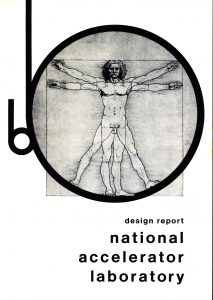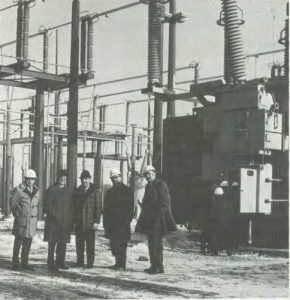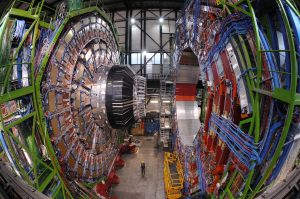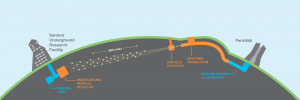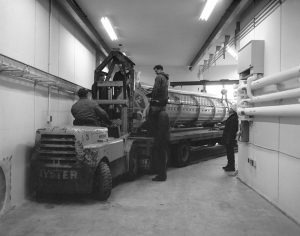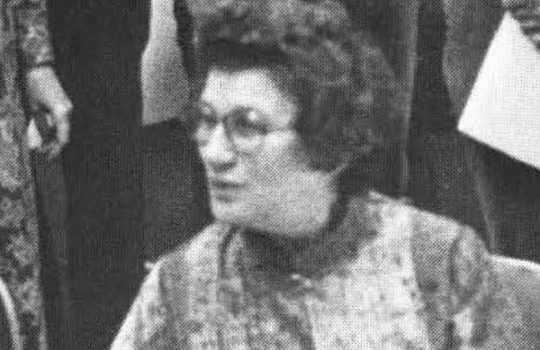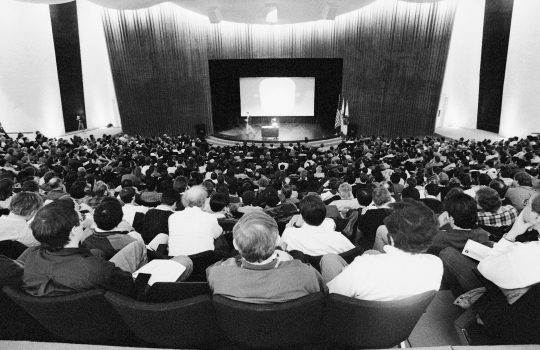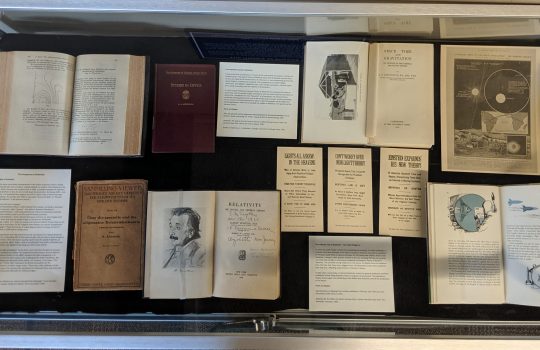Welcome to 2017! As part of our year-long recognition of Fermilab’s 50th anniversary, we will feature a few important milestones in the laboratory’s history every month.
A walk down January lane takes us all the way to the first laboratory design report.
January 1968: NAL Design Report
The first task of the NAL employees was to design the accelerator and develop a plan for its construction and the operation of the lab that would run it. In January 1968, NAL employees completed the National Accelerator Laboratory Design Report. This report laid out the plans for the lab and its accelerator complex, which would accelerate protons to 200 GeV.
Jan. 21, 1971: Master power substation turns on
At 1:45 p.m. on Thursday, Jan. 21, 1971, the Master Power Substation, located about a quarter of a mile from the “footprint area” at the NAL main site, became operational. Director Robert Wilson turned the simple control switch in the substation, which closed the 345-kilovolt main oil circuit breaker in the substation yard and sent the first power through the first 40-megawatt power transformer. It was part of the premiere of the transmission of the heavy power load that would be required to operate NAL’s accelerator system at 500 GeV.
Jan. 22, 2008: Last piece of CMS detector lowered underground
Fermilab helped in the construction of CERN’s CMS detector, which operates in the Large Hadron Collider, a proton-proton collider designed to ultimately run with a collision energy of 14 TeV.
Jan. 22, 2015: DUNE collaboration forms
DUNE, the Deep Underground Neutrino Experiment, is an international experiment that will consist of two detectors placed in the world’s most intense neutrino beam, which will be generated by Fermilab’s planned Long-Baseline Neutrino Facility. One detector will record particle interactions near the source of the beam, and a larger second detector will be installed at the Sanford Underground Research Laboratory in Lead, South Dakota.
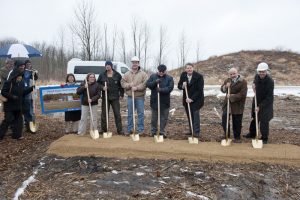
At the Liquid-Argon Test Facility groundbreaking were, from left: Fermilab Deputy Director Young-Kee Kim; Gina Rameika, Particle Physics Division; Kevin Bomstad and Jason Whittaker, Whittaker Construction and Excavation; Dixon Bogert, Fermilab; Mike Weis, DOE; Fermilab Director Pier Oddone; Erik Gottschalk, Particle Physics Division.
Jan. 23, 2012: Lab breaks ground on Liquid-Argon Test Facility
Despite the biting cold and snow, scientists and Fermilab personnel gathered outside to break ground for Fermilab’s new Liquid-Argon Test Facility in January 2012. Liquid-argon technology would be used for Fermilab’s neutrino experiments, including DUNE, MicroBooNE and other short-baseline neutrino programs.
Jan. 30, 1970: Workers move the first linear accelerator tank into the tunnel
It all started with a tank. Proton beam would eventually travel through this linear-accelerator structure, and then several more, in successive stages to achieve higher and higher, record-breaking energies.

